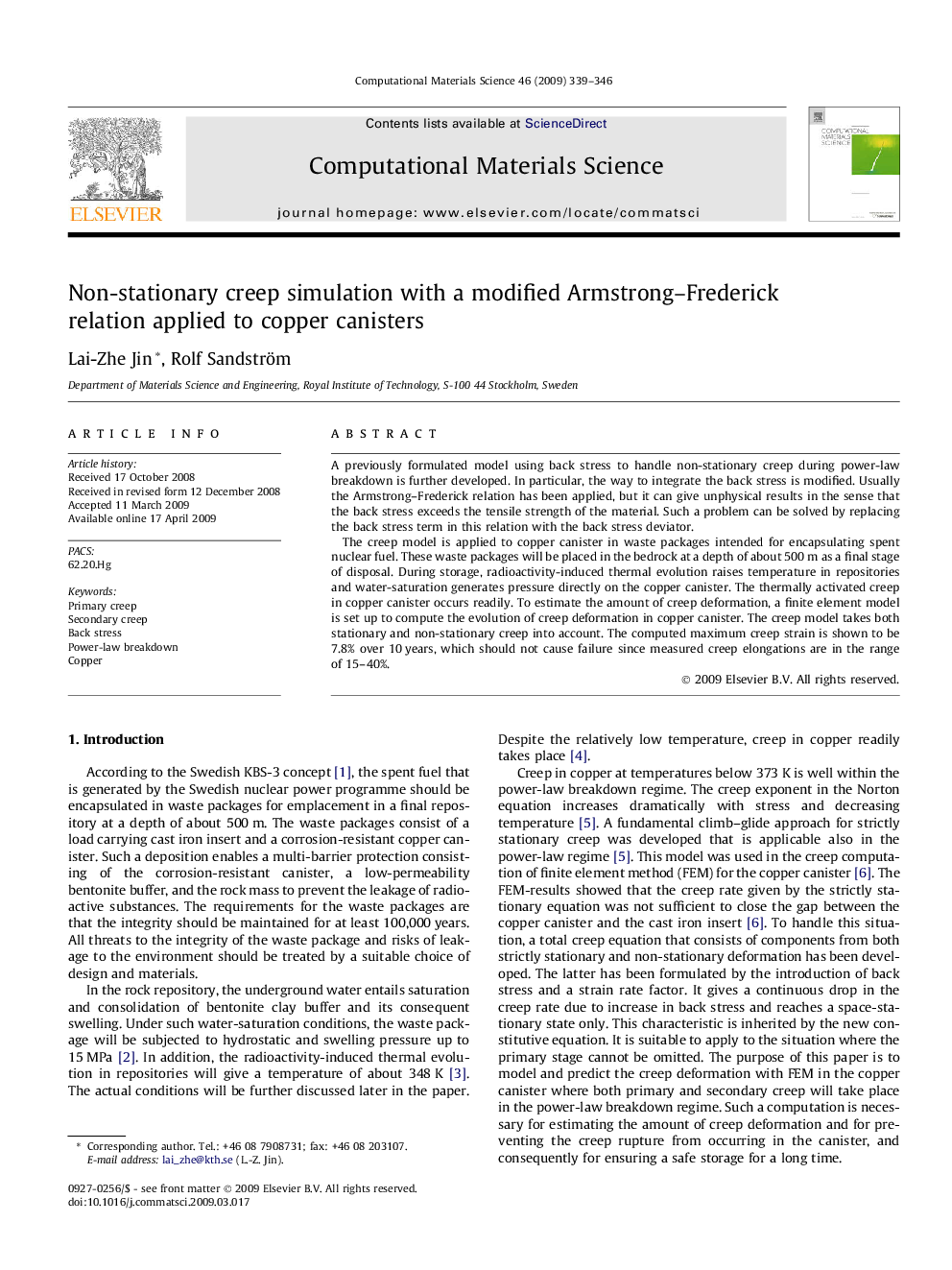| Article ID | Journal | Published Year | Pages | File Type |
|---|---|---|---|---|
| 1563542 | Computational Materials Science | 2009 | 8 Pages |
A previously formulated model using back stress to handle non-stationary creep during power-law breakdown is further developed. In particular, the way to integrate the back stress is modified. Usually the Armstrong–Frederick relation has been applied, but it can give unphysical results in the sense that the back stress exceeds the tensile strength of the material. Such a problem can be solved by replacing the back stress term in this relation with the back stress deviator.The creep model is applied to copper canister in waste packages intended for encapsulating spent nuclear fuel. These waste packages will be placed in the bedrock at a depth of about 500 m as a final stage of disposal. During storage, radioactivity-induced thermal evolution raises temperature in repositories and water-saturation generates pressure directly on the copper canister. The thermally activated creep in copper canister occurs readily. To estimate the amount of creep deformation, a finite element model is set up to compute the evolution of creep deformation in copper canister. The creep model takes both stationary and non-stationary creep into account. The computed maximum creep strain is shown to be 7.8% over 10 years, which should not cause failure since measured creep elongations are in the range of 15–40%.
